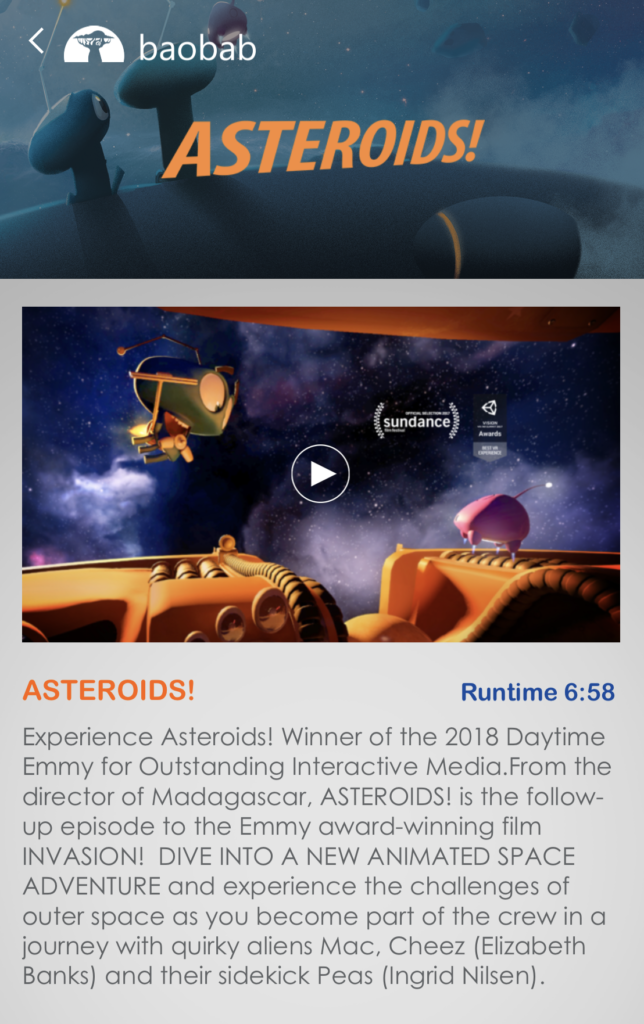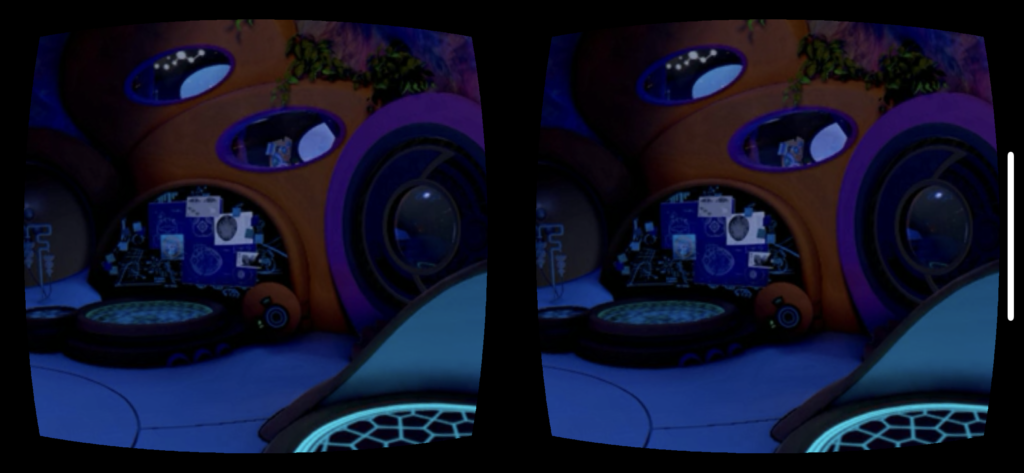I used the Google Cardboard to view a VR 360 short movie called “Asteroids!” by baobab. In this short movie, the user is virtually placed in the center of a spaceship and depending on the view, the user can see the outside (space) from the large window, or the user can see the interior of the spaceship. There is a storyline within this six-minute clip, which starts off with a peaceful scene, and then the characters face an emergency situation, one of the characters (the mom?) faces death but regains life, and the family is back to their happy norm.

The crucial difference of this 360 video from any other one-side video is that the user is the one who chooses which part of the scene he/she decides to watch. For example, when five dirt pieces hit the window of the spaceship, it was up to the user (in this case, myself) to turn around and see what had hit the window. What I mean by this is that when I was watching this scene, I was looking at the interaction of the three characters facing the interior of the ship. Suddenly, I heard a sound of something hitting the window, and so I turned around with my VR headset and saw that five pieces of green dirt had hit the window. In a sense, I turned around instantaneously when I head that sound out of curiosity, but some user may not even bother turning around, which would mean that that user will not witness that five green dirt on the window.
At times when I was watching this video, I was lost as to where the action was taking place. For example, there would be an action taking place at a certain location and then it would jump to a different location. Those times, I had to do a 360 turn around to figure out where the next scene was taking place. I was watching this video in my room on my bed and so it was easy for me to do a 360-degree turn. However, if I had been watching this video in a smaller and limited space, my actions would have been different. Therefore, I realized that I must secure a free 360-degree space before watching or doing any 360 VR or AR experience.

